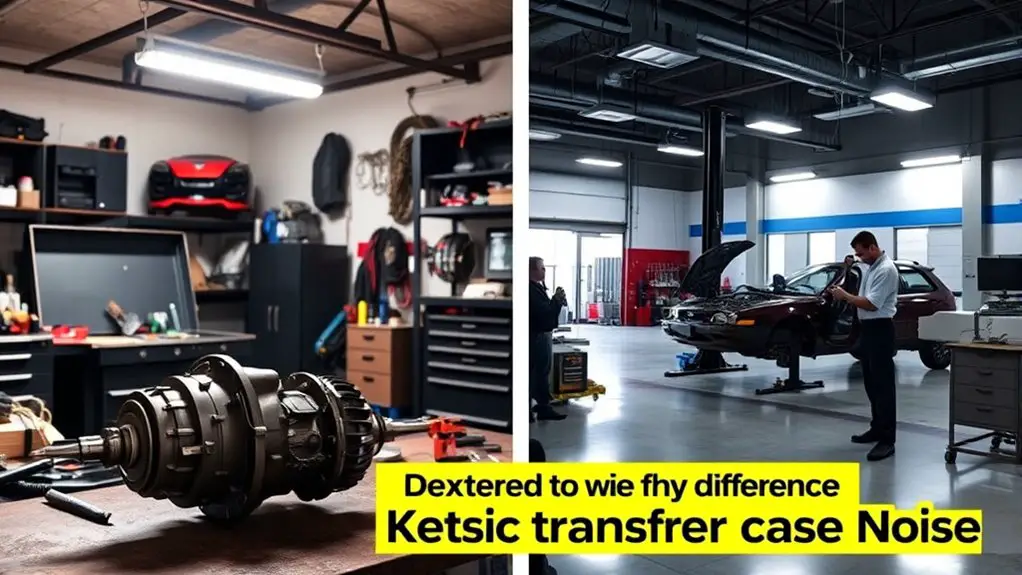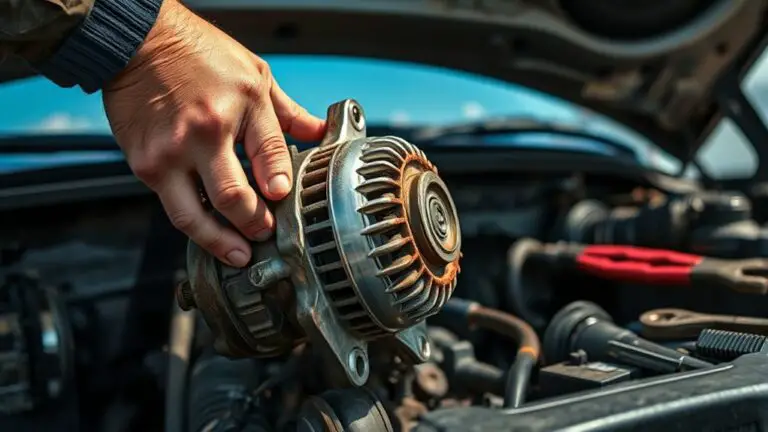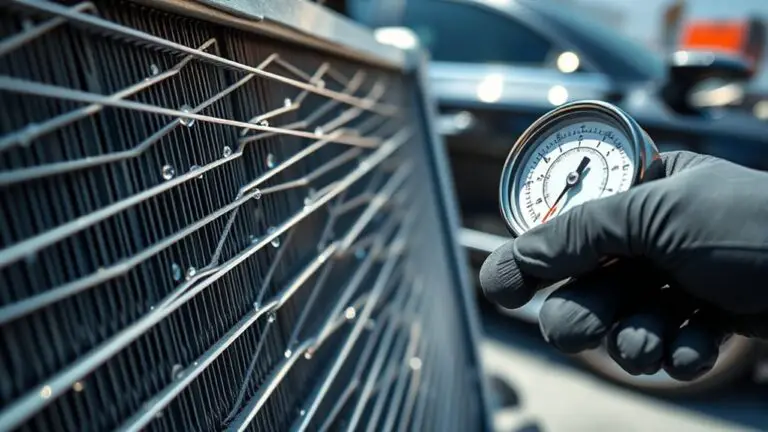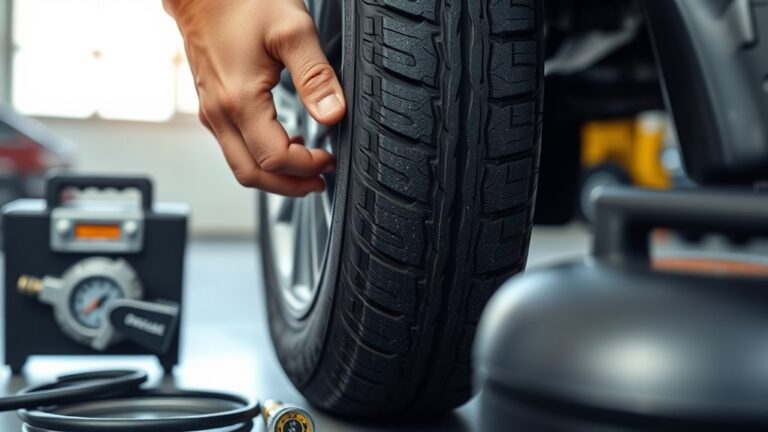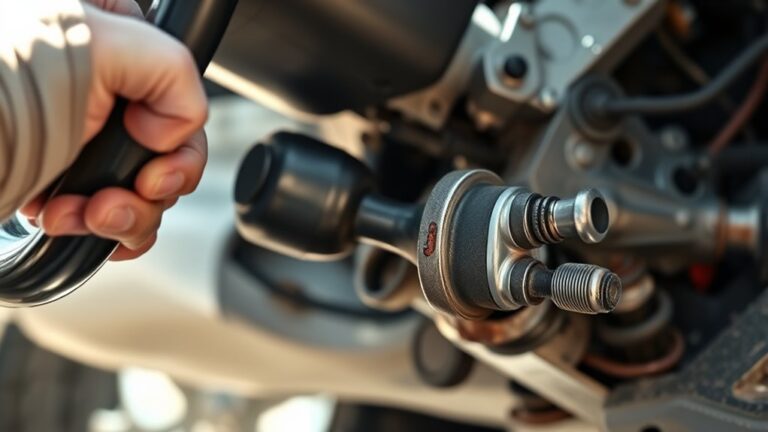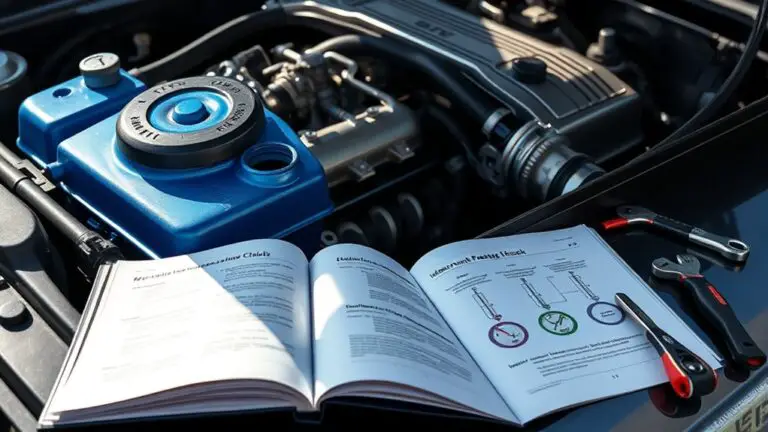Cost Guide: Fixing Transfer Case Noise at Home Vs Shop
Fixing transfer case noise can cost you $100 to $300 if you tackle it yourself, covering tools and parts. Professional services, however, range from $500 to $1,200. DIY repairs may take a few hours to a couple of days, while shops often complete them quickly due to their expertise. Consider your experience and access to tools before deciding. Recognizing your limits can save you time and money, and there’s more to discover about the process ahead.
Understanding Transfer Case Noise: Common Causes and Symptoms
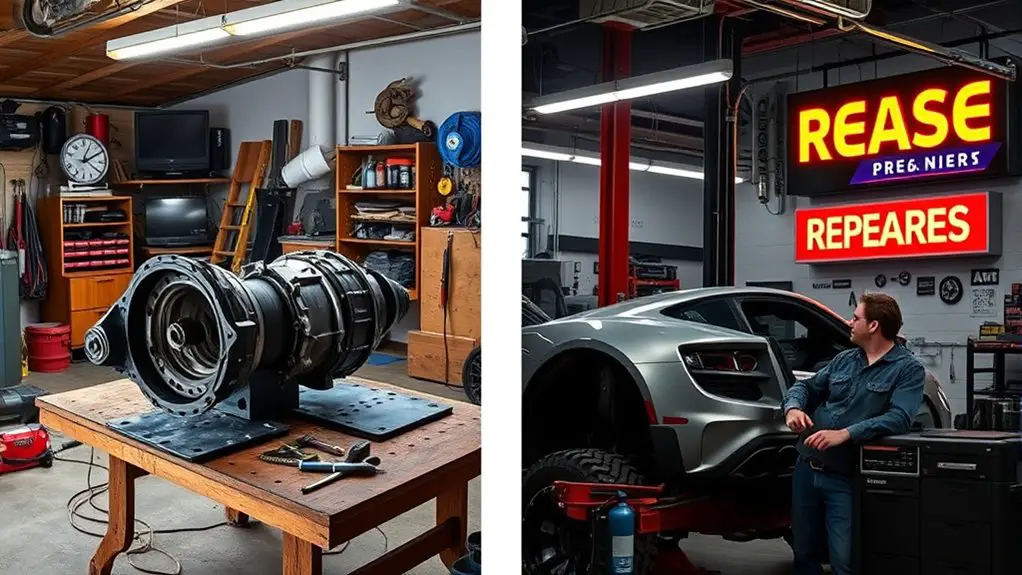
When you notice unusual sounds coming from your vehicle’s transfer case, it’s essential to identify the underlying issues promptly. Noise symptoms such as grinding, clunking, or whining can indicate various problems. A grinding noise might suggest worn gears or insufficient lubrication, while a clunking sound could point to loose or damaged components. Whining noises often stem from low fluid levels or failing bearings.
Pay attention to when these noises occur; for instance, if they increase with acceleration or during gear shifts, they may signify deeper issues. Additionally, consider the type of transfer case your vehicle uses—part-time, full-time, or automatic—as symptoms can vary. Ignoring these sounds can lead to more severe damage, jeopardizing your freedom on the road. Regular maintenance checks can prevent costly repairs and keep your transfer case functioning smoothly.
DIY Approach: Tools and Materials Needed
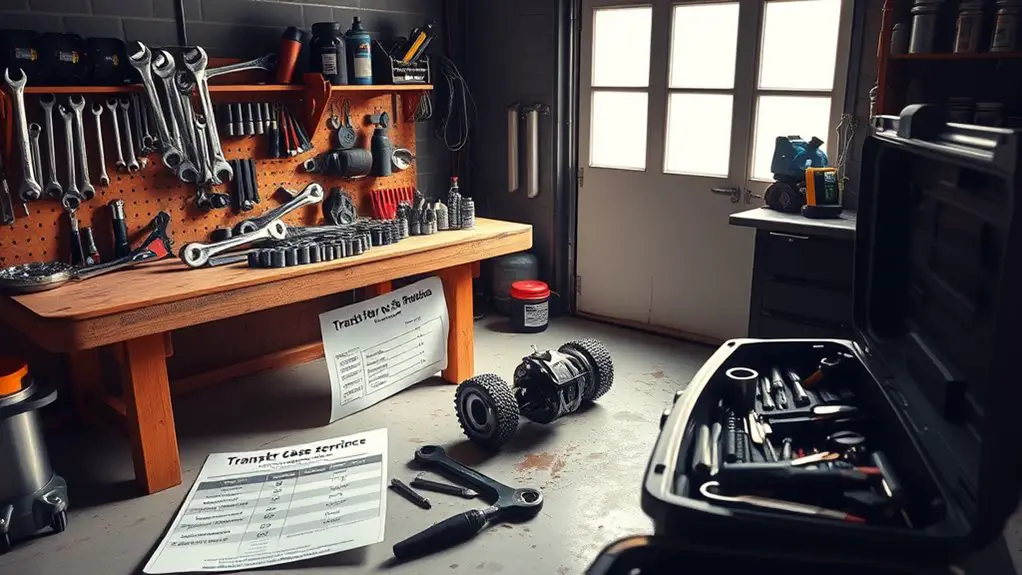
To effectively address transfer case noise issues, you’ll need a specific set of tools and materials. Start with a socket set and wrenches to remove the transfer case from your vehicle. A torque wrench is vital for reassembling components to manufacturer specifications. For noise diagnosis, a mechanic’s stethoscope helps pinpoint the source of the sound, while a multimeter can check electrical connections, if applicable.
You’ll also need transmission fluid to refill the transfer case after repairs, along with a drain pan for fluid collection. A gasket scraper and sealant are necessary for ensuring proper sealing during reassembly. Finally, having a floor jack and jack stands will provide safe access to work under your vehicle. With the right tools and materials in hand, you’ll be well-equipped to tackle transfer case noise issues confidently and effectively.
Cost Breakdown: DIY Repairs vs. Professional Services

Understanding the costs associated with fixing transfer case noise can substantially influence your decision on whether to tackle the repairs yourself or hire a professional. DIY repairs typically involve lower repair costs, primarily for tools and parts, ranging from $100 to $300 depending on the extent of the issue. You’ll need to factor in your time and any specific tools you may need to purchase.
On the other hand, professional services can range from $500 to $1,200, depending on labor rates and the complexity of the repairs. When considering your budget, think about your mechanical skills and the potential for errors in DIY repairs, which could lead to higher long-term costs. Ultimately, weighing these budget considerations will help you decide the best route for you, balancing your desire for freedom with the financial implications of each option.
Time Investment: Comparing Repair Durations
While you might be tempted to jump into fixing transfer case noise yourself, it’s essential to take into account the time involved in both DIY repairs and professional services. Repair timelines can vary greatly depending on your experience with noise diagnosis and the complexity of the issue. A DIY job might take anywhere from a few hours to a couple of days, especially if you’re unfamiliar with the components or lack the right tools. On the other hand, a professional shop typically has the expertise and equipment to diagnose and address the problem more quickly, often completing repairs within a few hours, given they have the necessary parts on hand. Additionally, if the noise diagnosis reveals underlying issues, you may find yourself investing more time in a DIY project than anticipated. Balancing time against cost is vital for making an informed decision that aligns with your freedom and lifestyle.
Evaluating Your Skills: When to Seek Professional Help
If you’ve assessed your time investment and decided to tackle the transfer case noise issue, the next step is to evaluate your skills and knowledge in automotive repair. This skill assessment is essential for ensuring you’ve got the repair confidence needed to proceed or recognize when to seek professional help.
Consider these factors:
- Experience Level: Are you familiar with transfer cases and their components?
- Tools and Equipment: Do you have access to the necessary tools for the job?
- Troubleshooting Ability: Can you accurately diagnose the issue and determine if it requires specialized intervention?
If you find yourself lacking in any of these areas, it might be wise to consult a professional. Remember, understanding your limits is key to avoiding costly mistakes and ensuring your vehicle’s longevity. Your freedom to repair should never come at the expense of safety and reliability.
Frequently Asked Questions
Can Transfer Case Noise Indicate More Severe Vehicle Issues?
Yes, transfer case noise can indicate more severe vehicle issues. Noise symptoms, like grinding or clunking, often signal impending transfer case failures. These sounds may arise from worn gears, low fluid levels, or damaged components. Ignoring these noises can lead to costly repairs down the line, affecting your vehicle’s overall performance. It’s vital to address any unusual sounds promptly to guarantee your vehicle remains reliable and to maintain your freedom on the road.
What Type of Warranty Covers Transfer Case Repairs?
Think of a warranty as a safety net for your vehicle. When it comes to transfer case repairs, you’ll typically find coverage under powertrain warranties, which often include the transfer case, transmission, and drivetrain components. Additionally, some vehicle manufacturers offer extended warranties that provide extra repair coverage. Always check the specifics of your warranty type, as terms can vary considerably, ensuring you’re protected from costly repairs down the road.
How Can I Maintain My Transfer Case to Prevent Noise?
To maintain your transfer case and prevent noise, regularly check and change the fluid according to your vehicle’s specifications. Ascertain the seals and gaskets are in good condition to prevent leaks. Inspect the mounting bolts and components for wear or damage, and address any issues promptly. Utilizing high-quality lubricants can aid in noise reduction and enhance performance, giving you the freedom of a smoother ride without annoying transfer case sounds.
Are There Specific Brands Known for Reliable Transfer Cases?
You’d think all transfer case brands are created equal, but that’s far from the truth. Reliable brands like BorgWarner and Aisin stand out due to their durability and engineering. When choosing a transfer case, consider reliability factors such as material quality and warranty terms. By investing in a trusted brand, you’re not just avoiding noise; you’re gaining peace of mind. After all, who wouldn’t want a dependable transfer case for those off-road adventures?
How Do I Know if the Noise Is Normal or Alarming?
To determine if the noise from your transfer case is normal or alarming, listen closely. Normal sounds might include light whirring or clicking, especially during turns. However, if you hear grinding, clunking, or a high-pitched whine, these could be alarming signs. You should also pay attention to changes in the noise intensity or if it coincides with difficulty shifting gears. If you’re unsure, consulting a professional’s always a wise option.

